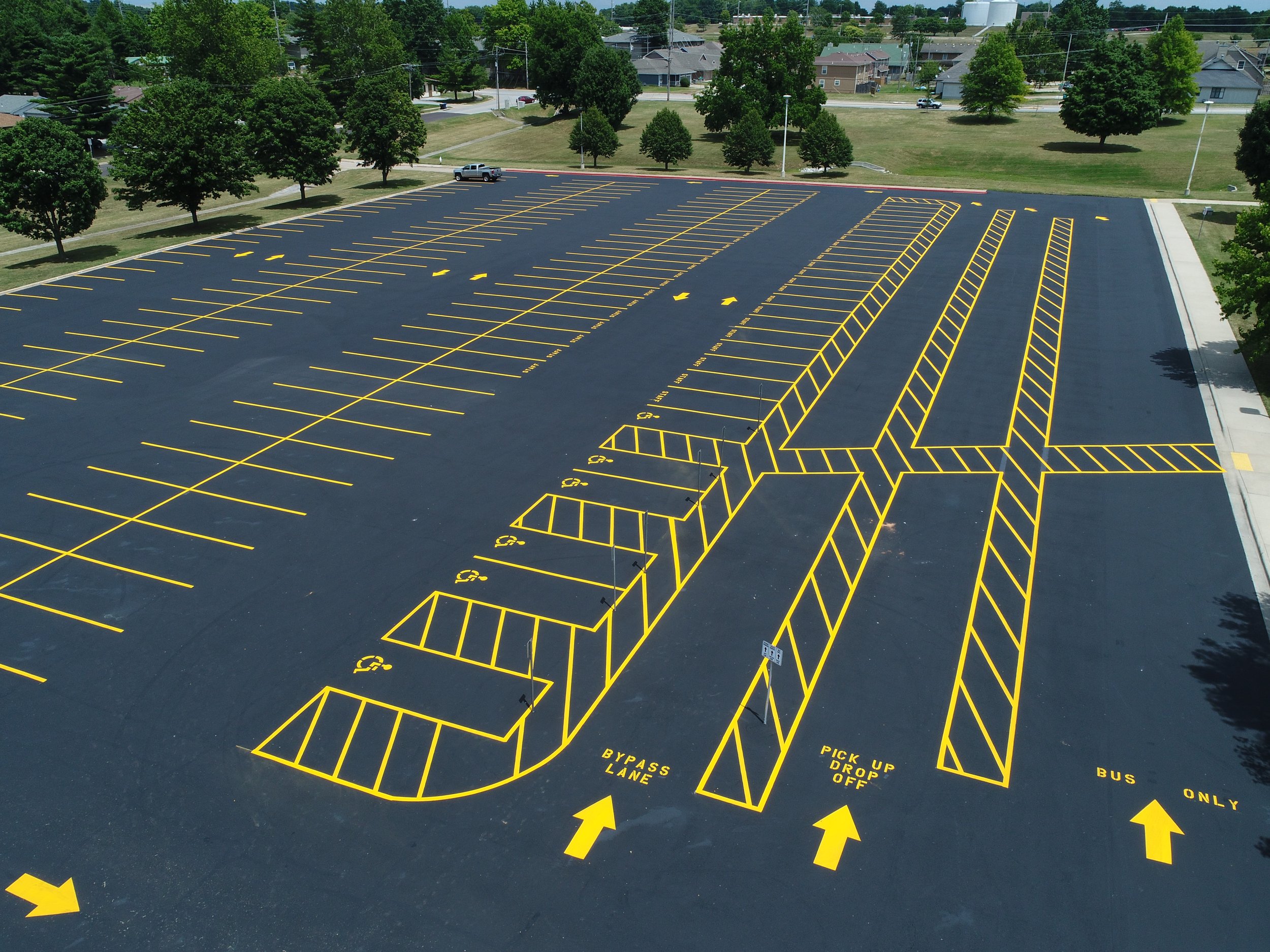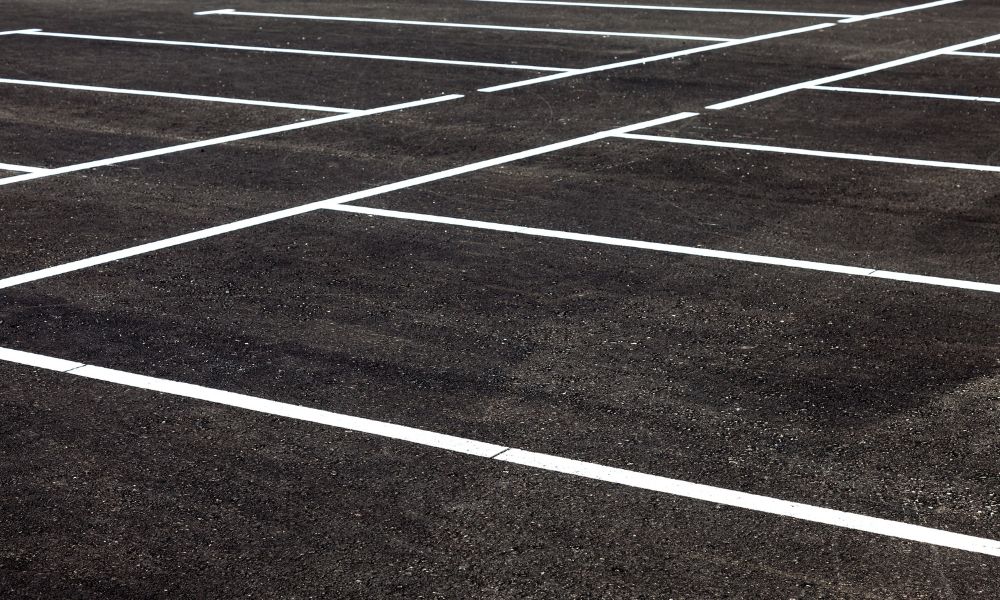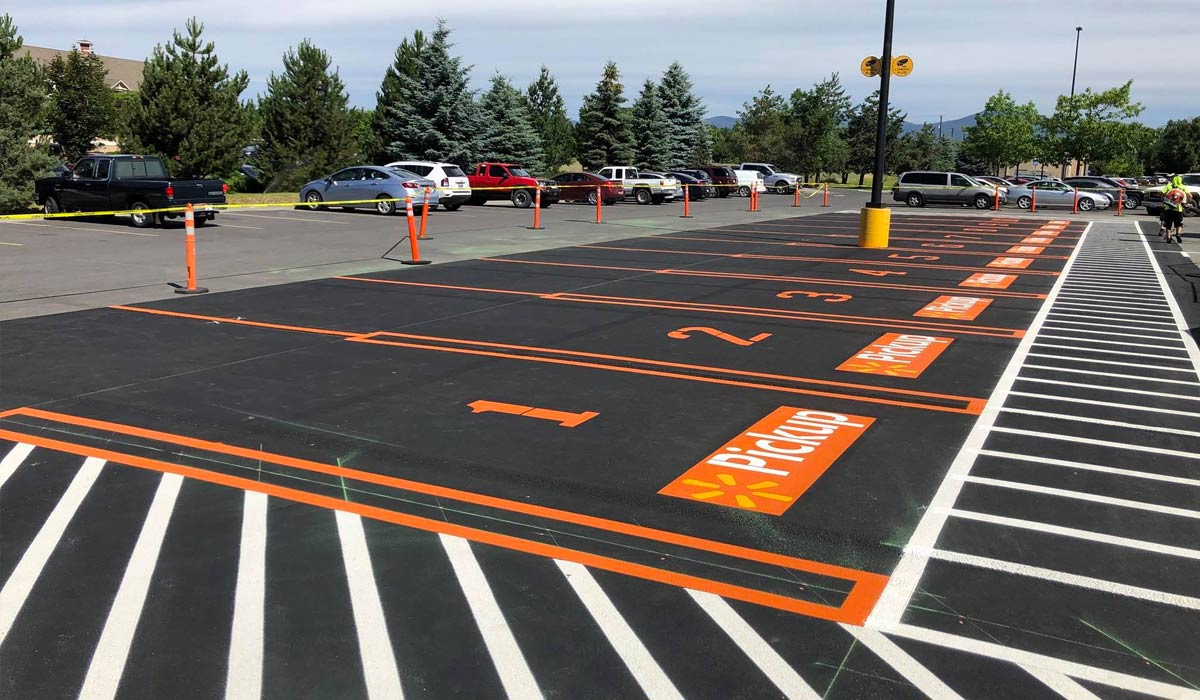A Comprehensive Overview to the Best Practices in Roadway Paint for Public Highways
Efficient road paint is a vital component in making certain public safety and optimum traffic circulation on freeways. This discussion will certainly explore the finest techniques in this field, consisting of the option of suitable products and progressed application strategies. It is necessary to consider not only the prompt impact of road markings however also their long-lasting upkeep and exposure under differing environmental problems. Recognizing these elements can dramatically influence the effectiveness of road markings, yet several are unaware of the nuances included. As we think about these ideal practices, the implications for mishap decrease and general roadway use will end up being obvious.
Significance of Road Painting
Road painting plays a vital duty in keeping website traffic safety and security and efficiency, with studies suggesting that well-marked streets can decrease mishaps by approximately 30%. The clear difference of lanes, pedestrian crossings, and various other important markings serves to direct vehicle drivers and pedestrians, fostering a predictable setting when driving. This predictability is vital for efficient navigation and aids lessen confusion, which can frequently lead to crashes.
In addition, road markings are important in conveying important information, such as speed restrictions and directional support. They improve visibility, specifically in unfavorable weather or throughout nighttime driving. The presence of reflective products in road paints further enhances visibility, permitting chauffeurs to discern critical markings that affect their behavior when traveling.

Selecting the Right Materials
Picking appropriate products for roadway paint is important to achieving effective and sturdy markings. The option of materials straight affects the exposure, longevity, and safety and security of roadway markings. Typical options include water-based paints, solvent-based paints, and thermoplastic materials, each with distinct buildings and applications.
Water-based paints are eco-friendly, quick-drying, and appropriate for the majority of weather condition problems, making them suitable for urban settings. They might require more constant maintenance due to wear and tear. Solvent-based paints, while supplying excellent adhesion and sturdiness, can present ecological and health worries as a result of unstable natural substances (VOCs)
Thermoplastic materials are progressively preferred due to their resilience and lasting efficiency. These products are warmed prior to application, enabling a strong bond with the pavement. Their reflective residential or commercial properties improve exposure, specifically in the evening.
When choosing materials, factors such as traffic volume, climate conditions, and the particular sort of roadway must be considered. Conducting extensive research study and consulting with makers can aid make certain that the picked products fulfill local policies and standards, ultimately contributing to safer streets and boosted vehicle driver awareness.
Effective Application Methods
Efficient application methods play an essential duty in making sure that road markings attain ideal performance and long life. This method reduces overspray and makes certain that the paint Full Article is applied evenly, which is necessary for maintaining roadway safety.
Prior to application, it is important to prepare the surface area appropriately. This consists of cleansing the roadway of debris, oil, and moisture to enhance attachment. Additionally, temperature level and humidity must be considered during the application procedure to achieve the finest outcomes.
Using the proper tools is also critical. Line stripers furnished with flexible widths permit specific markings that comply with governing standards. It is crucial to calibrate the devices on a regular basis to ensure consistency in paint thickness.
Timing and Ecological Factors
Proper timing and consideration of environmental factors are important for the successful application of road markings. The effectiveness of roadway paint largely depends on temperature, humidity, and wind conditions at the time of application. Ideally, temperatures Bonuses should be in between 50 ° F and 85 ° F(10 ° C to 29 ° C) for optimum bond and treating. When temperatures are too reduced, paint might not treat appropriately, causing premature wear and minimized exposure.
Moisture levels also play an important function; high moisture can impede drying out times, while excessively completely dry conditions might trigger rapid dissipation of solvents, affecting the paint's efficiency. Wind can introduce pollutants and debris, potentially endangering the high quality of the markings. Therefore, it is suggested to choose tranquil days for application.

In addition, taking into consideration seasonal variants is vital. Road painting throughout wet seasons may lead to washouts, while extreme warmth can cause paint to blister. Scheduling paint tasks throughout positive climate condition can significantly enhance the long life and performance of roadway markings. By carefully assessing these factors, firms can make sure that road markings are used efficiently and keep their exposure and resilience with time.
Upkeep and Durability Strategies

One effective approach is to execute a systematic painting program based upon web traffic volume and ecological factors - Pavement marking. Higher website traffic areas might require even check more frequent upkeep to counteract the erosive results of cars and climate conditions. In addition, using long lasting materials, such as thermoplastic and epoxy paints, can dramatically extend the life expectancy of roadway markings
Cleaning roadway surface areas to remove debris and impurities is another crucial facet of maintenance. This makes certain optimal attachment of new paint and improves the total efficiency of the markings. Utilizing innovative technologies, such as automatic monitoring systems, can simplify the monitoring process and enhance upkeep timetables.
Including these strategies will not only enhance the exposure and security of roadway markings yet additionally reduce long-term expenses related to constant repainting and repairs. (Line painting company)
Final Thought
View Line painting Abbotsford in a full screen map
In recap, implementing best practices in road painting is essential for enhancing safety and effectiveness on public highways. The choice of proper materials, combined with effective application methods and consideration of ecological factors, adds to the durability and presence of road markings. Normal upkeep and examinations additionally prolong the lifespan of these markings, inevitably minimizing mishaps and improving total road usability. Sticking to these guidelines fosters more secure driving conditions and facilitates smoother website traffic flow.
The presence of reflective materials in roadway paints additionally improves exposure, permitting motorists to discern critical markings that influence their actions on the road.
Picking proper materials for road painting is essential to attaining effective and long lasting markings.While the initial application of roadway markings is vital, ongoing maintenance approaches are equally important to ensure their long life and presence. Additionally, the use of durable materials, such as polycarbonate and epoxy paints, can dramatically extend the life expectancy of roadway markings.
The option of appropriate materials, incorporated with effective application techniques and factor to consider of ecological factors, contributes to the toughness and visibility of road markings.